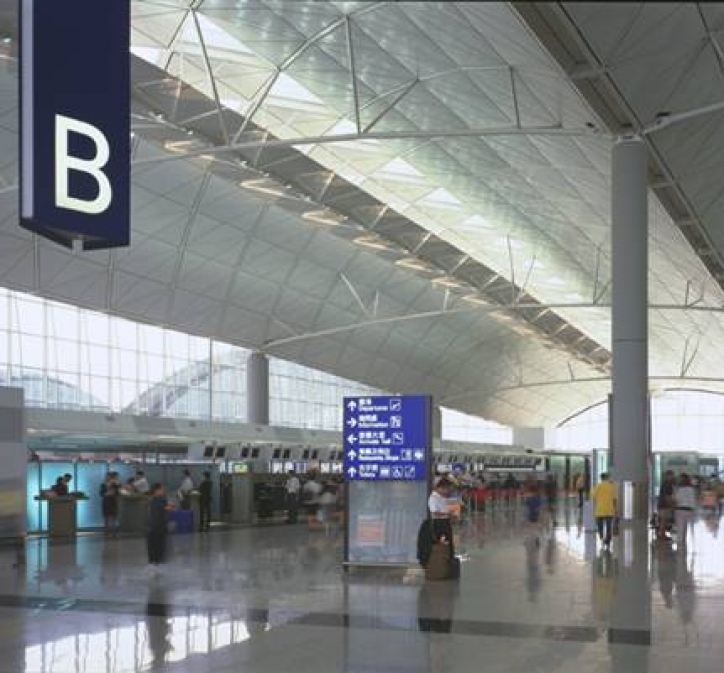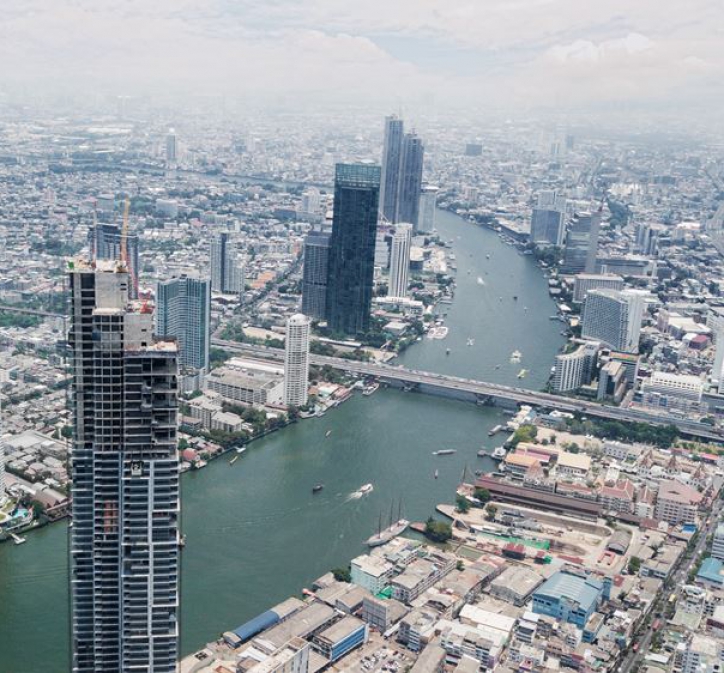Statement Pieces
FEBRUARY 2020 LIFESTYLE
Meet the man curating Capella and Four Seasons Private Residences Bangkok into modern art galleries

If you’ve never thought to hire a law professor to curate your art collection, then you’ve never met a law professor who’s on the board of trustees at the Smithsonian Institute’s Hirshhorn Musuem in Washington, D.C. Over the past couple of decades, Dr. Disaphol (Poui) Chansiri, has become one of the premier art authorities in Thailand. He runs DCA Art Consultant as a hobby sidelining his day job as a law faculty chair at Assumption University. Little wonder the affable polymath was asked to commission and select the showcase art works in Capella Bangkok and Four Seasons Private Residences Bangkok at Chao Phraya River.
At Four Season Private Residences, the priority was finding art that was soothing, minimalist, and impressive. “I played with lines and space throughout the building, and went with senior artists,” Disaphol says. For Capella, the challenge was incorporating the theme of its riverfront location without being too on-the-nose about it. “The Chao Phraya has been the main force in Bangkok since the city’s founding, important for trading. We are a mixed culture: Thai, Chinese, Indian, etc. We are very good at handicrafts and pottery. How can we involve history and culture for the hotel guests to see in a subtle way?”
We wanted real fine art for each room,” he says. The other constraint? The designer had envisioned white paintings—on white walls. Disaphol thought of the artist Nipan, who is known for his textured conceptual work. The Royal Barge Procession is a beautiful epic hymn composed by a prince from the late-Ayutthaya period, sung by a chanter to direct the rhythmic strokes of the rowers. Nipan selected sections from the lyrics and used a needle to punch small holes to write them in Thai on white paper. Each room has its own unique edition handmade by the artist. “You really have to go close to see the words,” Disaphol says. “It’s super special.”
Standing guard at the main hotel entrance are ceramic horses made by Wasinburee, whose family owns a famous pottery studio in Ratchaburi. The horse sculptures echo those you’ll find at temple entrances, to help feng shui and bring prosperity, and they also recall the olden days, when you’d tie up your horse at a hitching post when you arrived at someone’s house. The main lobby, meanwhile, is headlined by a sweeping mixed-media piece that is a modern interpretation of temple murals. Artist Pannaphan used gold leaf, powders, iron and stone to make it 3D. Here, you’ll also find an engraved plywood abstract piece by Japanese artist Soichiro, in which one viewer may see a river-walk, another a bucolic farm. Disaphol says: “I chose a different medium because I’d like people to see the contemporary relevance of handicrafts.” Possibly the most traditional work is in the Living Room, where artist Krirkbura Yomnage used watercolors to paint houses, temples and other traditional buildings—something geared more for foreign visitors to take in a snapshot of old Thailand.
The centerpiece of Côte, the coastal Mediterranean from Michelin three-starred Mauro Colagreco, will be by a young Malaysian artist who has conceived of geometric, abstract depictions of a bird’s-eye view of the neighborhood rooftops. “When we walked through his exhibit at the KL Biennale, we all lost our breath,” Disaphol says. And he dares you not to be bowled over by Ploenchan Vinyarat’s large textile woven to resemble a net, incorporating sequins and beads to make it glitter. “It’s like being on the river—the sparkle of the fish, the splash of the water,” Disaphol says. “This is totally different from what you normally see in a hotel.” Well, color us unsurprised—beyond normal, Capella Bangkok is headed for extraordinary.



